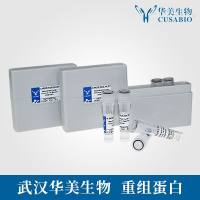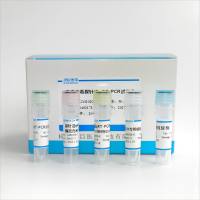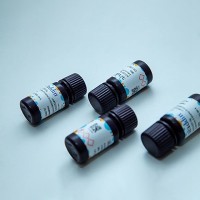One-Tube RT-PCR with Sequence-Specific RT Primers
互联网
856
The reverse transcription-polymerase chain reaction (RT-PCR; 1 ,2 ) applies the power of amplification to the study of gene expression: the PCR is carried out on cDNA obtained by reverse transcription of mRNA. The protocol described here has been developed to allow a simple and highly sensitive reaction with a reduced risk of contaminations from preceding PCRs or plasmid preparations (false positives) or RNases (false negatives). The use of specific RT primers increases the specificity of RT-PCR, reverse transcription can be limited to the region of the mRNA that will be amplified avoiding long 3′untranslated regions and RT primers are chosen in order to avoid GC-rich regions that often are copied inefficiently be the enzyme. T m values of RT primers (nona- to dodecamers) should be between 25�C and 35�C, the 3′ nucleotides should be G or C in order to assure stable base pairing at the 3′ end and the primers should not show dimerization capabilities. Several primers may be used in the same reverse transcription reaction provided that they are not complementary to each other. In this way, a sample mRNA and an internal standard mRNA, such as β-actin or glyceral-3-phosphate dehydrogenase mRNAs, can be reverse transcribed in the same tube. Reverse transcription is carried out in two steps at 25�C (annealing) and 42�C (extension). The cDNA obtained is either used as a whole or divided for multiple amplifications and/or amplification of the internal standard. PCR primers and Taq polymerase are added and cDNA is denatured and then amplified.









